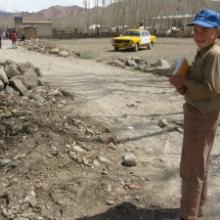school
The U.S. Supreme Court on Tuesday allowed more public funding of religious entities in an important ruling in favor of two Christian families who challenged a Maine tuition assistance program that excluded private schools that promote religion.
Four days. That’s how long researchers have found that people’s sadness and outrage last after each major gun massacre in America. Perhaps this is our own defense mechanism kicking in or maybe we have become far too desensitized to this time loop of horrific gun violence. But anger that dissipates after four days dishonors the lives that are stolen. Four days isn’t enough time to sufficiently process and grieve. And it’s not nearly enough time to galvanize the political will necessary to overcome political fecklessness, particularly the degree to which the GOP remains captive to fierce advocates for gun rights.

Cross Lake School on the Red Lake Reservation in Minnesota. Image via catalog.archives.gov
Across the nation, Catholic Church leaders are beginning to reckon with their institution’s role in operating Indigenous residential schools and the lasting consequences these schools left on Native American communities. One state seeing growing momentum to address this history is Minnesota, which had 15 boarding schools; Catholic groups operated at least eight of them.
We are currently in the midst of what the American Library Association condemned in November as “a dramatic uptick” in efforts to challenge or remove certain books from libraries and schools. Many of these censorship efforts have been led by conservative Christians and conservative politicians who are concerned these books will dissuade their kids from embracing what they call “Judeo-Christian values.” But as Ryan Duncan explained, Christians are deluding themselves if they believe banning stories about gender, race, or sex will halt their kids’ curiosity. Ban ’em or burn ’em, these books will not disappear and kids will continue to seek out resources on these topics — to some parents’ chagrin.
Conservative Supreme Court justices on Wednesday appeared ready to further expand public funding of religiously based entities, indicating sympathy toward a challenge by two Christian families to a Maine tuition assistance program that excludes private schools that promote religious beliefs.
Editor’s note: On Sunday, the Texas Supreme Court temporarily blocked mask mandates in two of the state’s biggest counties, upholding Gov. Gregg Abbott’s executive order prohibiting them. As school begins across the country, some districts in Texas, Florida, and elsewhere are defying mask mandate bans, in some cases risking school funding. Teachers and administrators are preparing for a year of unknowns as the Delta variant rages among the unvaccinated.
Tammy Stallcup has been teaching junior high and middle school choir for 34 years in Texas public schools, primarily in Odessa. Now teaching near Fort Worth, Texas, she begins her 35th year this fall, and wrote this prayer for teachers.
I REMEMBER one particularly troubling occasion at I.S. 61, Leonardo da Vinci Intermediate School in Queens. I was in sixth grade, class 6C, an SP (special progress) class. One day, midway through the school year, the assistant principal walked into my homeroom class and told me that I was being transferred into 6N. ... When you are 10 years old and in the third-ranked class in the sixth grade, to be told suddenly in front of your classmates that you are being transferred into the 14th-ranked class is embarrassing. In the few seconds it took for my mind to absorb this bad news and the shock of it, the opinion of my classmates of me changed from “peer” (meaning somewhat smart) to “dumb.”
Courts have generally rejected challenges to “See You at the Pole” events, in which students who want to pray gather at their school’s flagpole outside of class time. And the Supreme Court has generally upheld student-led prayer as long as it is not compulsory or organized by school officials.
Too often, Parker said, teachers have placed Christian crosses and Bible verses on school walls, prayed aloud in classrooms and said things like, “The answer to all your big questions is God.”
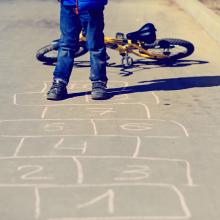
Image via Nadezhda1906/Shutterstock.com
The couple has found that part of their calling in these schools is not just to the children, but also to the teachers who serve those children. Cheryl has taken to performing regular acts of kindness for the teachers — showing up in the teachers’ lounge with a plate of cookies, or stopping by the main office to give a hug to the administrator in charge of discipline.
“I tell her, ‘I’m sure you’ve had a rough day today. Can I give you a hug?’ I just never knew it would make such a difference. [They] feel so supported,” said Cheryl.
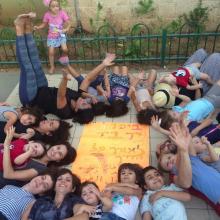
Image via Hand in Hand / RNS
Amid ongoing violence between Palestinians and Israelis, a school in Jaffa seems more determined than ever to teach Arab and Jewish children about coexistence.
In a sunny playground here just 3 miles south of Tel Aviv, children paint recycled tires in vibrant colors and refurbish wooden furniture to beautify a place that many in the community say is their best chance at a peaceful future.
This is the Jaffa branch of “Yad b’Yad” — or “Hand in Hand” in both Hebrew and Arabic — a school made up of four kindergarten and two first-grade classes that aims to respond to growing Jewish-Arab segregation and violence with mutual respect and open dialogue.
“Psychologically, this is the only place where we feel that my children, and my neighbor’s children, are secure,” said Hani Chamy, an Arab engineer and generations-old resident of Jaffa who was one of the first parents to send her two girls to the pre-school.
“It’s a great relief.”
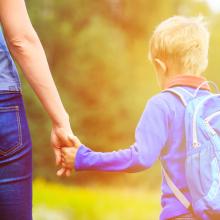
Image via Nadezhda1906/Shutterstock
Robert Putnam’s new book, Our Kids: The Crisis in the American Dream, laments the decline in social capital (how we are connected to others and care for them) with its devastating impact on poor children today. Past generations of poor children often had more opportunities because they benefited from connections with churches, teachers, coaches, and other mentors who supported them. Putnam, a respected Harvard sociologist, documents how too many children are missing these caring adults in their lives today. He offers "purple solutions" to the growing "opportunity gap" and poverty that includes support by all for public schools.
Many churches witness to their concern for school children with a "Blessing of the Backpacks" service. Some churches invite the children in the congregation to bring their own backpacks for a blessing before a new school year begins. This is a way to acknowledge that school is a common yet very important part of our children’s lives. Other churches collect school supplies for children in need, assemble the donated supplies in backpacks, and bring them to church for a blessing in worship.
The tune of the following new hymn is the same Gaelic melody used for "Morning Has Broken," and it seems appropriate to sing a joyful "morning" tune as children, parents, and teachers start to get up earlier in the mornings to head off to school.
Here in Kabul, one of my finest friends is Zekerullah, who has gone back to school in the eighth grade although he is an 18-year old young man who has already had to learn far too many of life’s harsh lessons.
Years ago and miles from here, when he was a child in the province of Bamiyan, and before he ran away from school, Zekerullah led a double life, earning income for his family each night as a construction crew laborer, and then attempting to attend school in the daytime. In between these tasks, the need to provide his family with fuel would sometimes drive him on six-hour treks up the mountainside, leading a donkey on which to load bags of scrub brush and twigs for the trip back down. His greatest childhood fear was of that donkey taking one disastrous wrong step with its load on the difficult mountainside.
And then, after reaching home weary and sleep deprived and with no chance of doing homework, he would, at times, go to school without having done his homework, knowing that he would certainly be beaten. When he was in seventh grade, his teacher punished him by adding 10 more blows each day he came to school without his homework, so that eventually he was hit 60 times in one day. Dreading the next day when the number would rise to 70, he ran away from that school and never returned.
Now Zekerullah is enrolled in another school, this time in Kabul, where teachers still beat the students. But Zekerullah can now claim to have learned much more, in some cases, than his teachers.
What happens to a community when a Roman Catholic school closes its doors?
That’s the question Nicole Stelle Garnett and Margaret F. Brinig, two Notre Dame law professors, pondered as they studied closures in Chicago, Philadelphia, and Los Angeles.
There were 7,000 Catholic schools in the U.S. in 2010, down from 13,000 in 1960, according to the National Catholic Education Association. The decline, rooted in the migration of parishioners to the suburbs and the secularization of Catholic culture, has been dubbed the “closure crisis” within the church.
Religion News Service asked Garnett about what she and Brinig found in their investigation, which resulted in their new book: Lost Classroom, Lost Community: Catholic Schools’ Importance in Urban America.
The interview has been edited for length and clarity.
1. Awakening:
It is impossible to build a transformative movement for justice if people remain in the dark about the magnitude of the crisis at hand, its origins, and its racial, economic, and political dimensions. I wrote The New Jim Crowbecause I strongly suspected that most people simply had no idea what was really going on and that education was a necessary prerequisite to effective action. I still believe that’s the case, and so urging people of faith and conscience to commit themselves to raising the consciousness of their congregations and communities is extremely important.
Encourage people to hold study groups, film screenings, public forums, and dialogues to help others awaken to what has happened on our watch and become motivated to join the movement. The Unitarian Universalists, the Samuel DeWitt Proctor Conference, Veterans of Hope, and PICO are all engaged in consciousness-raising work and have created study guides based on The New Jim Crow and other resources.
2. Building an Underground Railroad:
Obviously, consciousness-raising is not enough—we will have to get to work. In my view, that necessarily involves building an “underground railroad” for people trying to make a break for true freedom in the era of mass incarceration and who desperately need help finding shelter, food, work, and reunification with their families.
In my Santa Barbara, California neighborhood, which we sometimes call “Leave it to Beaver Land” for its seeming serenity and peace, a new practice has become evident: Children no longer walk alone to our neighborhood elementary school. Every morning, a parade of mothers and fathers accompany their children the short distance to school, dogs in tow and cellphones in hand. It looks like the practice of safety, but it’s also the practice of fear. You just never know. It could happen anywhere. It could happen here.
These parents know about something we call “school incidents.” They know the statistics about the number of American children that are shot, stabbed, and killed in our schools each year. Like the rest of us, they know about the big ones, from Columbine to Newtown to Chicago to Pittsburgh, and they know there are so many more stories that never make it to CNN.
The soundtrack for the story of childhood in America reverberates with gunfire and the sobs of stunned classmates and grieving parents. It’s the soundtrack of fear.
Fear is our newest neighbor, even in sunny “Leave it to Beaver Land.”
FOR GENERATIONS, Native North Americans and other Indigenous peoples have lived the false belief that a fulfilled relationship with their Creator through Jesus required rejecting their own culture and adopting another, European in origin. In consequence, conventional approaches to mission with Indigenous peoples in North America and around the world have produced relatively dismal outcomes.
The result has subjected Indigenous people to deep-rooted self-doubt at best, self-hatred at worst.
One of the more egregious examples of the “conventional” approach in Canada involved the church-run residential schools. Indigenous children were taken from their families, prevented from speaking their native languages, and subjected to various other forms of abuse.
Isabelle Knockwood, a survivor of church-run residential schools, observed, “I thought about how many of my former schoolmates, like Leona, Hilda, and Maimie, had died premature deaths. I wondered how many were still alive and how they were doing, how well they were coping, and if they were still carrying the burden of the past on their shoulders like I was.”
Given the countless mission efforts over the past four centuries (which in practice were targeted not so much to spiritual transformation as to social and cultural annihilation), we might conclude that Indigenous people must possess a unique spiritual intransigence to the gospel.
Chiamaka tells of women who plant seeds
of peace in tribal towns, pot-banging with spoons
to call men off their game of raid-and-rape.
A girl named Hope intercepts the hands
of crowing children trading blows
and coaxes them to shake their hands
although her own are quaking. At school
my shy daughter stuffs notes in friends’ lockers,
imploring playground harmony.
In Roald Dahl's classic children's book James and the Giant Peach, 7-year-old orphan James Henry Trotter escapes his two rotten, abusive aunts by crawling into a giant peach. The peach rolls, floats, and flies him to a new life of wonder and love.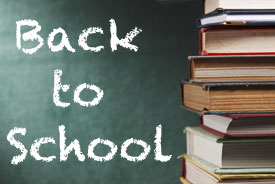
I'm reading this book aloud for the first time, and my listeners are spellbound by the story, especially the part where the very small old man opens the bag filled with magical crocodile tongues that will help a barren, broken peach tree grow fruit as big as a house.
"There's more power and magic in those things in there than in all the rest of the world put together," says the man.
There is.








